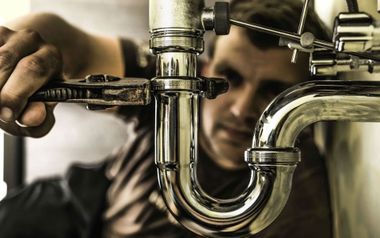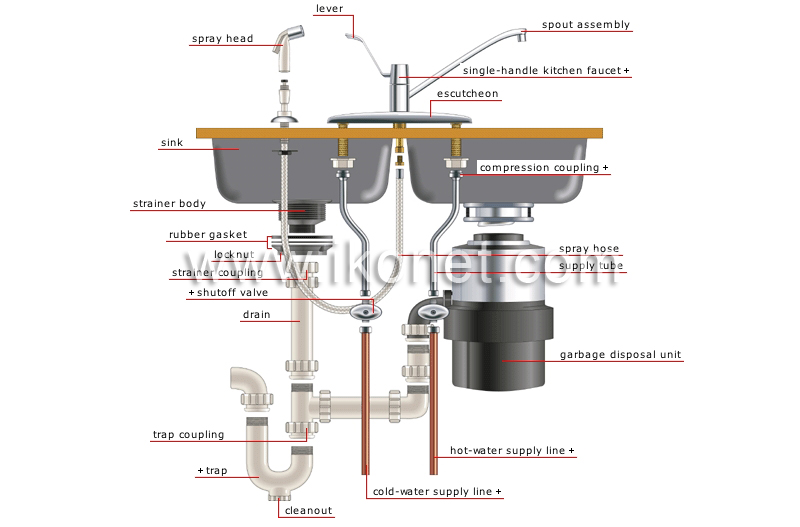Were you trying to locate information involving Anatomy of a House: Understanding the Components?

Understanding exactly how your home's plumbing system functions is essential for each home owner. From delivering clean water for alcohol consumption, cooking, and showering to securely getting rid of wastewater, a well-maintained pipes system is crucial for your family's health and wellness and convenience. In this comprehensive guide, we'll check out the detailed network that makes up your home's plumbing and offer pointers on maintenance, upgrades, and dealing with typical concerns.
Intro
Your home's plumbing system is more than simply a network of pipelines; it's a complex system that ensures you have access to tidy water and reliable wastewater elimination. Understanding its parts and just how they work together can help you avoid expensive repair services and make certain everything runs smoothly.
Basic Parts of a Plumbing System
Pipes and Tubing
At the heart of your plumbing system are the pipelines and tubes that lug water throughout your home. These can be constructed from numerous products such as copper, PVC, or PEX, each with its benefits in regards to longevity and cost-effectiveness.
Fixtures: Sinks, Toilets, Showers, etc.
Fixtures like sinks, toilets, showers, and bathtubs are where water is used in your house. Recognizing how these fixtures connect to the pipes system aids in detecting troubles and intending upgrades.
Shutoffs and Shut-off Factors
Valves manage the flow of water in your plumbing system. Shut-off shutoffs are critical throughout emergency situations or when you need to make repair work, allowing you to isolate parts of the system without interfering with water circulation to the whole residence.
Water System
Key Water Line
The primary water line connects your home to the municipal water supply or an exclusive well. It's where water enters your home and is dispersed to numerous fixtures.
Water Meter and Pressure Regulatory Authority
The water meter actions your water usage, while a pressure regulatory authority ensures that water moves at a risk-free pressure throughout your home's pipes system, stopping damage to pipelines and components.
Cold Water vs. Warm water Lines
Understanding the difference in between cold water lines, which supply water directly from the major, and hot water lines, which lug heated water from the hot water heater, assists in fixing and planning for upgrades.
Drainage System
Drain Piping and Traps
Drain pipelines lug wastewater away from sinks, showers, and commodes to the drain or septic system. Traps protect against drain gases from entering your home and additionally catch debris that can trigger obstructions.
Ventilation Pipelines
Air flow pipes permit air into the water drainage system, stopping suction that can slow down drain and trigger traps to vacant. Correct air flow is vital for keeping the stability of your plumbing system.
Value of Correct Drain
Ensuring appropriate drain avoids backups and water damages. Regularly cleaning drains and keeping catches can stop costly fixings and extend the life of your pipes system.
Water Heating System
Sorts Of Water Heaters
Hot water heater can be tankless or typical tank-style. Tankless heating systems warm water as needed, while storage tanks store warmed water for immediate use.
Updating Your Pipes System
Reasons for Upgrading
Updating to water-efficient components or replacing old pipelines can boost water quality, decrease water expenses, and raise the worth of your home.
Modern Plumbing Technologies and Their Advantages
Discover technologies like wise leakage detectors, water-saving commodes, and energy-efficient hot water heater that can conserve money and minimize ecological influence.
Cost Factors To Consider and ROI
Determine the in advance costs versus long-term savings when taking into consideration pipes upgrades. Numerous upgrades spend for themselves with lowered utility bills and fewer repair work.
Exactly How Water Heaters Link to the Pipes System
Recognizing just how hot water heater attach to both the cold water supply and warm water circulation lines helps in diagnosing issues like insufficient hot water or leaks.
Maintenance Tips for Water Heaters
Frequently flushing your water heater to eliminate sediment, checking the temperature settings, and examining for leaks can extend its lifespan and boost power performance.
Typical Pipes Concerns
Leakages and Their Causes
Leaks can occur due to aging pipes, loose installations, or high water stress. Attending to leaks quickly prevents water damage and mold development.
Obstructions and Obstructions
Blockages in drains and commodes are usually brought on by purging non-flushable products or a buildup of grease and hair. Making use of drainpipe screens and bearing in mind what decreases your drains pipes can avoid clogs.
Indicators of Pipes Problems to Expect
Low water stress, sluggish drains, foul odors, or unusually high water costs are indications of potential plumbing issues that ought to be addressed promptly.
Pipes Maintenance Tips
Normal Assessments and Checks
Schedule annual pipes evaluations to capture problems early. Try to find indications of leaks, corrosion, or mineral buildup in taps and showerheads.
Do It Yourself Upkeep Tasks
Easy jobs like cleansing tap aerators, looking for bathroom leakages utilizing dye tablet computers, or protecting exposed pipes in chilly climates can stop major plumbing problems.
When to Call an Expert Plumbing Professional
Know when a pipes problem needs specialist proficiency. Trying complex fixings without proper expertise can result in even more damage and greater repair work expenses.
Tips for Reducing Water Usage
Straightforward habits like taking care of leaks immediately, taking shorter showers, and running full tons of washing and dishes can save water and reduced your energy bills.
Eco-Friendly Plumbing Options
Take into consideration sustainable plumbing materials like bamboo for floor covering, which is durable and eco-friendly, or recycled glass for counter tops.
Emergency situation Preparedness
Actions to Take Throughout a Pipes Emergency situation
Know where your shut-off valves are located and how to turn off the water system in case of a ruptured pipeline or major leak.
Significance of Having Emergency Get In Touches With Helpful
Maintain contact info for neighborhood plumbers or emergency solutions conveniently offered for fast feedback throughout a pipes crisis.
Environmental Effect and Preservation
Water-Saving Components and Devices
Mounting low-flow taps, showerheads, and commodes can dramatically decrease water usage without giving up efficiency.
Do It Yourself Emergency Situation Fixes (When Relevant).
Temporary repairs like utilizing air duct tape to spot a dripping pipeline or putting a container under a leaking tap can minimize damage till a specialist plumber arrives.
Verdict.
Recognizing the makeup of your home's pipes system encourages you to keep it successfully, conserving money and time on repair services. By adhering to regular maintenance regimens and remaining educated regarding contemporary plumbing technologies, you can guarantee your pipes system operates efficiently for years ahead.
HOW YOUR PLUMBING SYSTEM WORKS
Which Pipes Do What?
Blue lines = fresh water supply entering the building Red lines = hot water supply entering the building Grey lines = pipes carrying waste away from the building and venting pipes carrying gases away from the building (through the roof) YOUR MAIN PLUMBING SYSTEMS
There are two main plumbing systems that support your home s basic plumbing needs one that brings clean water into your home, and one that sends dirty water away from your home. Connected to the toilet, bath, shower, and other faucets in your home, these two systems keep your water flowing in the right directions.
ACCESSING FRESH WATER
Fresh and clean water is brought into your home through the main water supply line . Filtered through one pipe, this water is pressured to flow into the various fixtures in your home at any given time.
This water can be sourced from a well located on your property, a pond or river (mostly cottages), or, as in most cases, from the city s municipal water treatment centre. However, it is important to note that water that is untreated, such as the water siphoned from ponds or rivers, may not be safe to drink. Personal water supplies always need to be treated for hardness and contaminants before consumed.
MUNICIPAL WATER SUPPLIES
Improve taste and odour Remove sediment Eliminate hardness Reduce chlorine COLD WATER SUPPLY VS. HOT WATER SUPPLY
Cold water flows into your home or building through the service line, which then distributes hot or cold water to your fixtures. This line is most commonly run through a central column that runs floor to floor. Hot water runs in short and straight pipes as the longer the pipeline, the more heat that will be lost in the transfer. Having shorter pipes also allows residents to access hot water more quickly.
WASTE WATER SYSTEM
Your wastewater system is divided into two parts pipes that send wastewater away from your home and venting pipes that send sewer gas away from your home. Sewage water travels through pipes that flush the water and waste towards local sewers that are operated and managed by your city or town. Most sewer systems rely on gravity to move the wastewater to where it needs to go.
The further away from your toilet or sink, the larger wastewater pipes become. This allows for waste to be disposed of from various parts of your home or business at once without pipe blockages. The angle and flow of these pipes are also essential for keeping your waste pipes clear of build up.
https://harrisplumbing.ca/how-your-home-plumbing-system-works/

Do you really like reading up on Plumbing Installation 101: All You Need to Know? Give a remark below. We'd be pleased to hear your responses about this blog post. We hope that you visit us again in the near future. Kindly set aside a second to promote this article if you appreciated it. We appreciate your readership.
Check Us Out